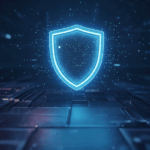The digital battleground has been skyrocketing over the past few years. As businesses and individuals rush to adopt AI, cloud, and IoT technologies, the risks lurking behind innovation are multiplying. In 2025, cybersecurity has become a frontline priority. The World Economic Forum’s Global Cybersecurity Outlook 2025 paints a vivid picture of this shifting terrain, warning that “cyberspace is becoming more complex” as threats, tech, and geopolitics intertwine.
If you want to stay ahead, here are six essential trends and strategies you must understand this year. Consult with the best cyber security company in India that will strengthen your cyber security measures, minimizing the risks.
1. Cyber Risks Are Escalating
One of the starkest findings: 72% of organizations say cybersecurity risks have increased in the past year. Ransomware, data breaches, and social engineering remain among the top threats. What’s new is how quickly these threats are evolving, driven by automation, larger attack surfaces, and more sophisticated actors.
The takeaway: many threats once seen as rare are now routine. Every organization must prepare as though an attack is not “if” but “when.”
2. Generative AI Is a Double-Edged Sword
2025 is shaping up as the year AI reshapes cybersecurity, for better and worse. In many firms, generative AI helps automate threat detection, triage incidents, and analyze anomalies.
But on the flip side, cybercriminals are leveraging GenAI to craft hyper-real phishing emails, impersonation attacks, deepfakes, and social engineering campaigns at scale. Also concerning: while many organizations anticipate AI’s impact, only about 37% have robust processes to assess AI security risks before deployment.
The net: AI amplifies both defense and offense. You should discuss with the top cybersecurity company in India before integrating it.
3. Supply Chains & Third-Party Risks Are Critical Blind Spots
In 2025, supply chain vulnerabilities are among the most cited barriers to cyber resilience. Many organizations are discovering that their weakest link is not in-house systems, but insecure partners, third-party software, or interconnected service providers.
What you don’t see can hurt you. Zero-trust architectures, continuous vendor assessments, and supply chain visibility tools are now mandatory defenses, not optional extras.
4. Geopolitics & Cyber Espionage Shape Strategy
In 2025, geopolitical pressures are inseparable from cyber risks. Nearly 60% of organizations say global tensions have influenced their cybersecurity approach. Executives increasingly fear state actors stealing intellectual property or sabotaging infrastructure. One in three CEOs now cites cyber espionage as a top concern.
Because digital infrastructure spans borders, cyber conflicts rarely stay outside national lines. Organizations must assume that future attacks may be hybrid: part technical, part political, part reputational.
Recommended reading: Cybersecurity in India: Adapting to the Age of AI
5. The Cyber Skills Gap Widens
If threats increase while defenses remain understaffed, chaos ensues. In 2025, the cybersecurity talent shortage remains acute: many organizations report lacking the necessary workforce. Only 14% of organizations say they have confidence in their current teams.
The gap isn’t just technical; it’s strategic. Cyber leaders with interdisciplinary knowledge, understanding AI, business risk, policy, and operations are rare. Always, hire the top cyber security company in India for the right approaches.
6. Cyber Resilience, Not Prevention, Is the New Mindset
In a world of escalating threats and uncertainty, resilience matters more than perfect prevention. That means assuming some attacks will succeed and preparing to bounce back quickly.
Resilience includes:
- Incident response planning with regular drills
- Backups, redundancy, and recovery mechanisms
- Real-time monitoring and anomaly detection
- Cross-functional coordination (IT, legal, PR, operations)
- Ecosystem cooperation (sharing threat intelligence with industry peers)
What You Can Do Now: A Quick Checklist
| Focus Area | Key Action |
| AI integration | Enforce review processes to vet AI tools before deployment |
| Vendor security | Mandate continuous audits and security certifications for suppliers |
| Access control | Implement zero-trust principles for all access |
| Incident readiness | Run tabletop simulations and test response protocols |
| Talent ecosystem | Partner with training providers, encourage internal upskilling |
| Collaboration | Share threat intel with peer networks and sector groups |
Looking Ahead & Why It Matters
In 2025, cyber threats are deeply embedded in how every organization operates. The pace of technological change, geopolitical instability, and increased connectivity has broken the boundary between “IT risk” and core business risk.
Firms that view cybersecurity as a cost center will be outpaced by those treating it as a strategic enabler.
Final Thoughts
Cybersecurity in 2025 demands one thing above all: agility with foresight. Knowing these six trends isn’t enough, you must act on them. The good news is that with frameworks, tools, and expert partnerships, you can turn risk into strength.
Here enters Grizon Tech, with its plenty of experience in this domain. We help organizations build adaptive, architecture-driven, and AI-aware cybersecurity strategies. Our approaches help clients to survive threats, anticipate and overpower them. In a world where attacks are inevitable, resilience is your strongest defense.






